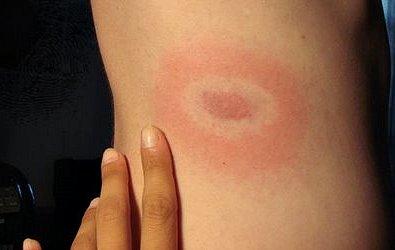The buggiest, blistering days of summer are just ahead. Add to that a nationwide early spring with record heat—and you have a TICKing time bomb for health problems at national parks in some parts of the country.
Everyone knows to apply sunscreen and drink plenty of water, but the Tick-Borne Disease Alliance is spreading the word that ticks are one of summer’s biggest dangers. The group has compiled a really insightful and serviceable list of Top 10 Tick Prevention Tips, some of which we guarantee you haven’t heard before.
Ticks are most active in the spring and summer months in their “nymph” stage when their small size permits them to feed—often unnoticed—for days. That ups the chance that humans can contract infectious bacteria and makes Lyme disease the fastest growing infectious disease and the most common tick-borne disease in the country, according to the Center for Disease Control.
There is currently no fool-proof diagnostic tool for Lyme disease, causing thousands of people to often go misdiagnosed and without appropriate treatment. Many sufferers of tick-borne illnesses are not even aware that they are victims of these diseases because they simply don’t have the facts. And there are numerous other diseases that ticks can pass along, as well.
Below are Top 10 Tick Prevention Tips, artfully phrased to spell out the word prevention.
1. Purchase tick-repellent clothing, especially clothing treated with permethrin, an insecticide that repels and kills ticks. You may spray your own clothing with permethrin or seek out brands such as Insect Shield, ExOfficio’s BugsAway or ElimiTick which remain effective for up to 70 washes. Big retailers like L.L. Bean and Eastern Mountain Sports carry these but so may many well-stocked outdoor shops in national park gateway communities.
2. Reduce the amount of skin exposed by sporting long pants, long-sleeved shirts and a hat.
3. EPA-approved insect repellent should be applied to exposed skin.
4. Venture in the center of woodland trails, and by all means avoid walking along deer paths, as these animals are tick taxis.
5. Every time you’ve been outside, check for ticks while you are out and as soon as you get back
6. Never wait to shower. Bathing as soon as possible will help in removing unattached ticks from your body. Bath time is the perfect time to carefully inspect for any unwanted hitchhikers.
7. Take your clothes off and put them in the dryer at high heat for about 30 minutes to kill any ticks. Anyone who lives in tick country will recognize this as an invaluable tip!
8. Inspect your pets when they come inside from the outdoors, as they may be transporting ticks that can then transfer to you.
9. Opt for light-colored clothing to make it easier to spot ticks.
10. Neatly tuck your shirt into your pants and your pants legs into your socks when possible to provide an extra line of defense against ticks. White socks are perfect for spotting ticks.




Comments
#10 is an important one. I personally can't wear long pants in the summer. I wear shorts in Michigan in January...I'm just neurotic like that. But I have noticed when I'm out with people wearing long pants that I realize very quickly if a tick is on me, whereas people with long pants don't tend to notice something inside their pantleg and can't check while in the field. So if you're going to do #2, make sure you do #10!